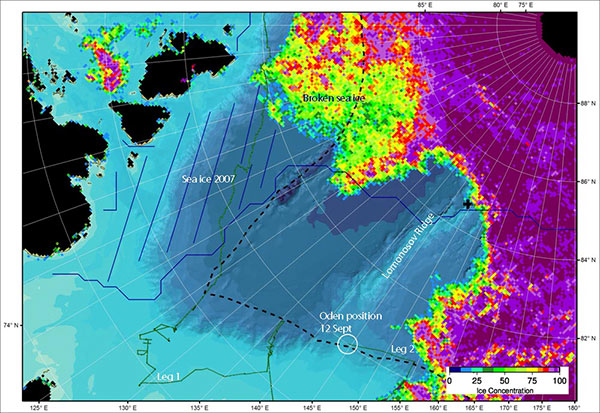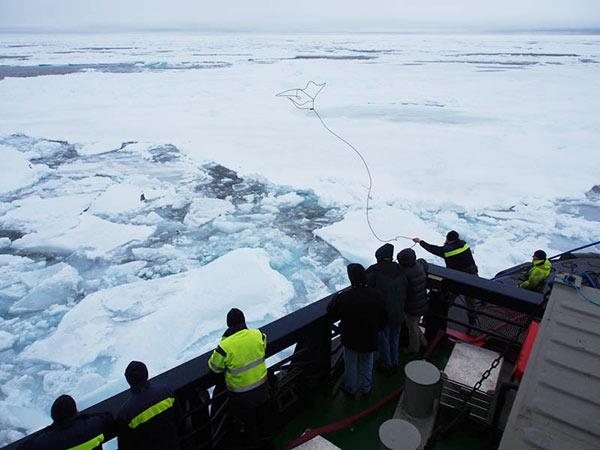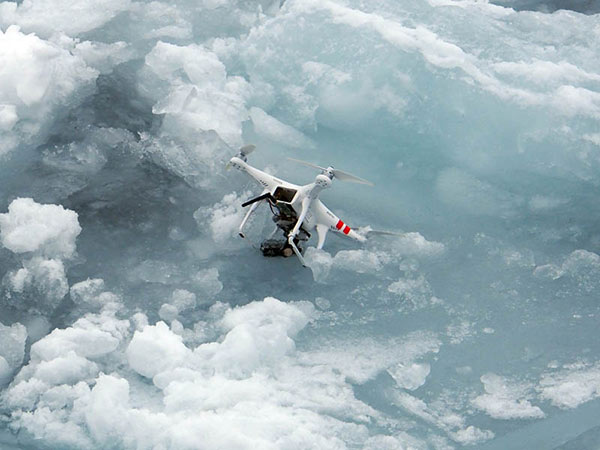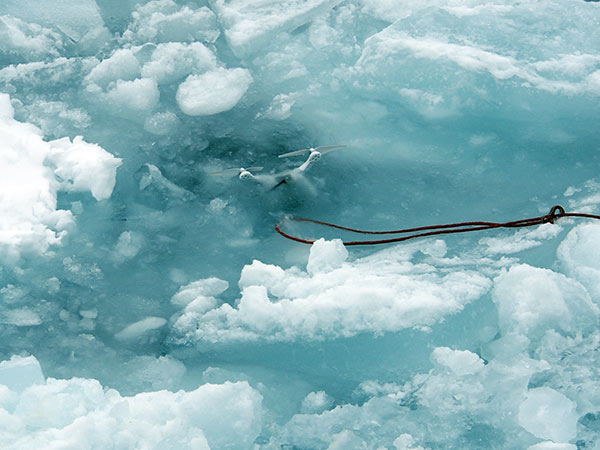The future Arctic Ocean?
|
We have now completed our shelf transects along the East Siberian Sea shelf following the Leg 2 cruise plan. Who could ever dream of that we would be able to complete all that we wrote into the cruise plan? But the fact is that we have! A big part of this success is due to the extremely light sea ice conditions we have experienced. Right now we are steaming towards the southernmost part of the Lomonosov Ridge in completely open water. I cannot help thinking, is this how the Arctic Ocean will look like in the future if the trend of diminish summer sea ice continues? Without the sea ice, this is a very dull environment. The open water certainly helps our geophysical mapping, but I rather see a sea ice cover! Looking into the past sea ice extent for September month, not even the record low years of 2007 and 2012 had less sea ice in this part of the Arctic Ocean (see map).
For sure the open area we are in is larger than the Baltic Sea! It also means that waves now builds up very rapidly due to a long fetch. For this reason, I feel like that the scientific questions we have concerning the sea ice in the SWERUS-C3 program are important to answer. How fast can the summer sea ice break down? Can it easily recover, or will a summer sea ice free Arctic Ocean lead to feed backs on the ocean and climate that makes recovering difficult? We now hope to get a short window with light winds so we can do our oceanographic stations work and coring in this ice free area. These activities are simply not possible to do from Oden with big waves. After all, Oden is an icebreaker. We estimate that we have five days more work do to in the open sea, then we will go north all the way to 85°N where the pack ice edge is. Nice! We hope to collect some critical data at that high latitude to wrap up some SWERUS-C3 key questions. During the cruise we have tried to send up a small radio-controlled helicopter to do some good filming of Oden in the ice with a mounted GoPro camera. One attempt after the other has failed. Something on Oden disturbs the radio control of the helicopter. During the last attempt, whatever the source of disturbance was it simply took over and the helicopter began flying away from Oden. It seemed liked it was called back home to Sweden! I heard some desperate screams from Björn Eriksson who was flying the helicopter before it crashed on the ice some hundred meters away from Oden. We spotted where it crashed and past it after our station work. I really would liked to get the few minutes of potentially good filming it made before crashing. Ivan Öström, Chief Officer, tried to cast a lasso to get hold of the helicopter. He came close, but the small pieces of ice that the helicopter floated on eventually gave away and we could all see the helicopter sink into the more than 1000 m deep Arctic Ocean.
|
| by Martin Jakobsson |


















